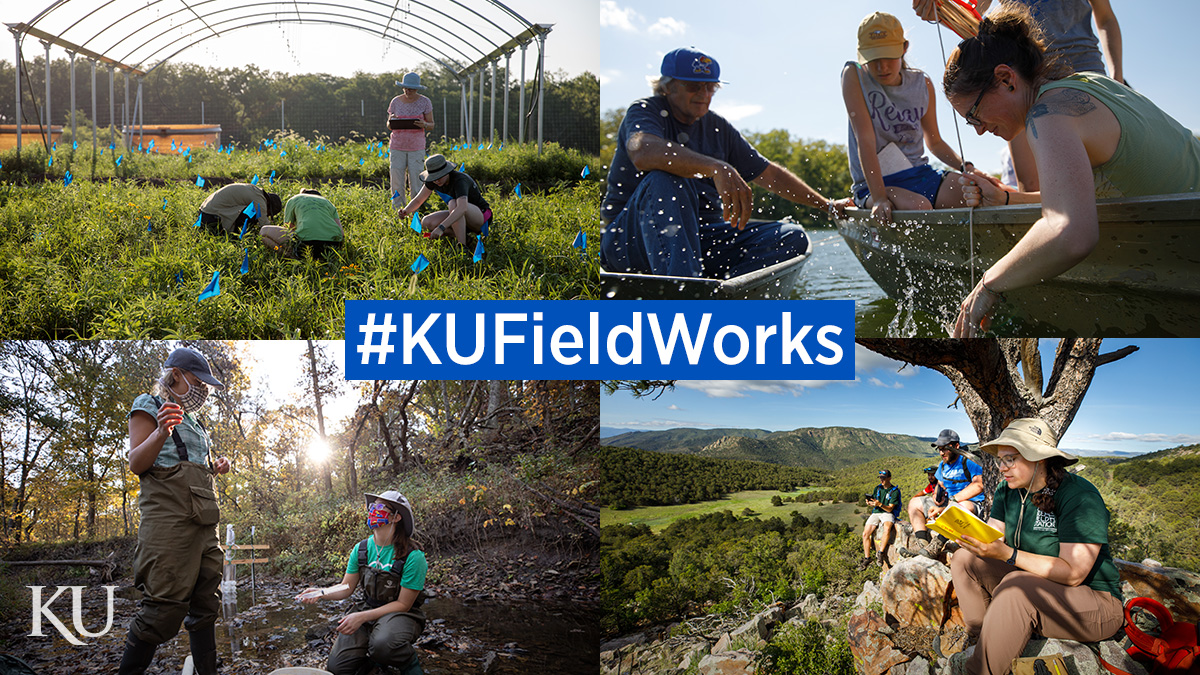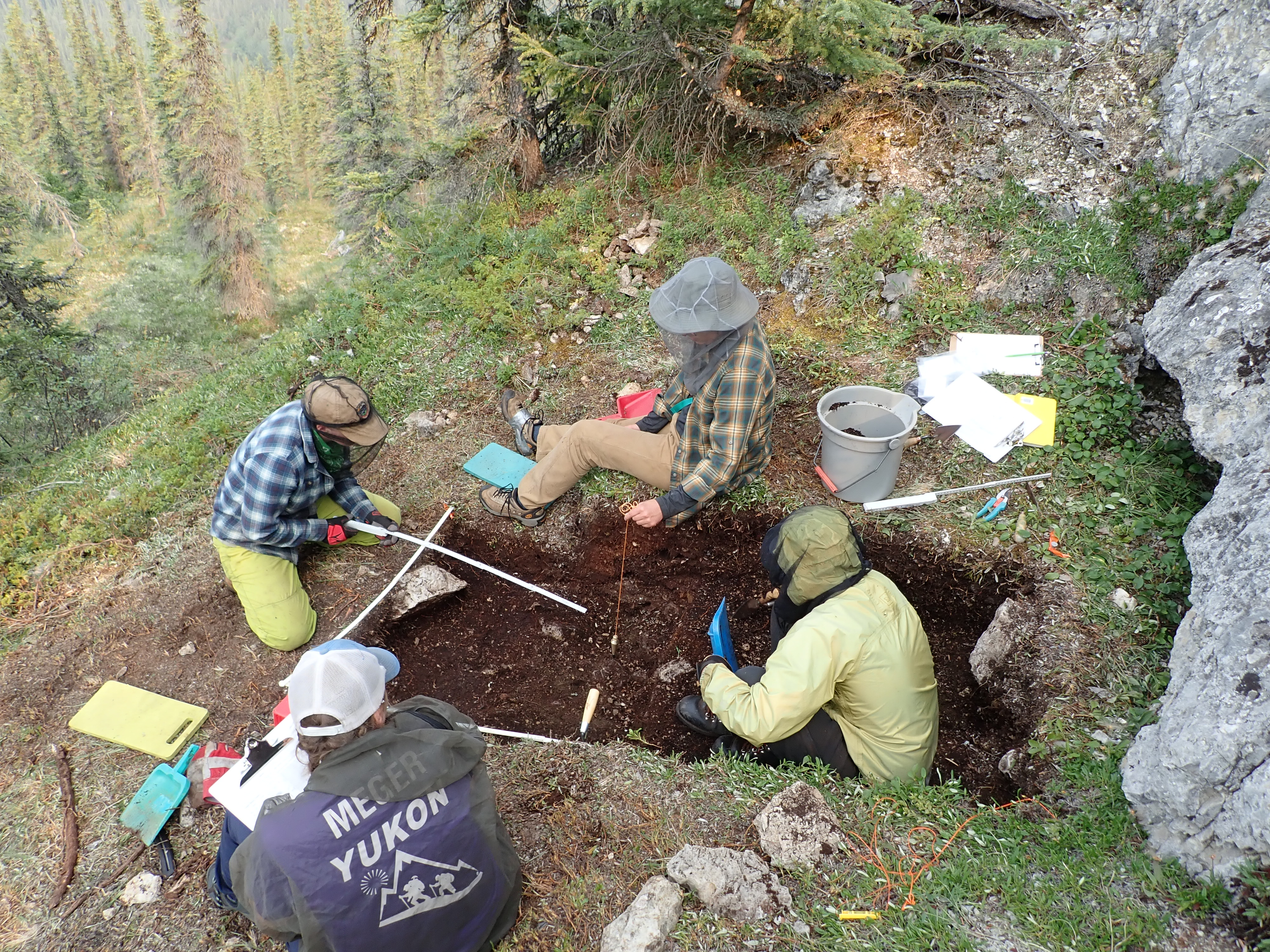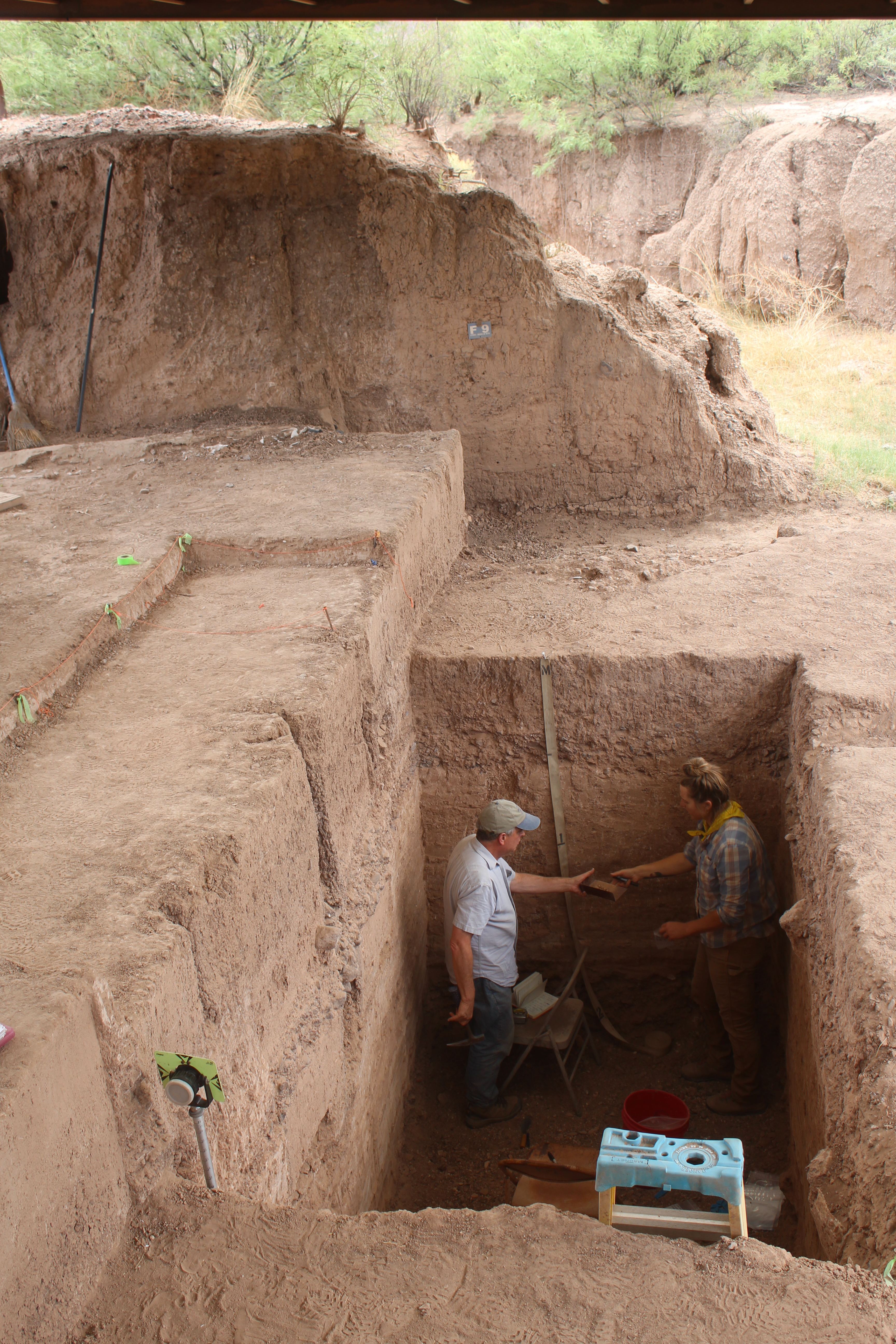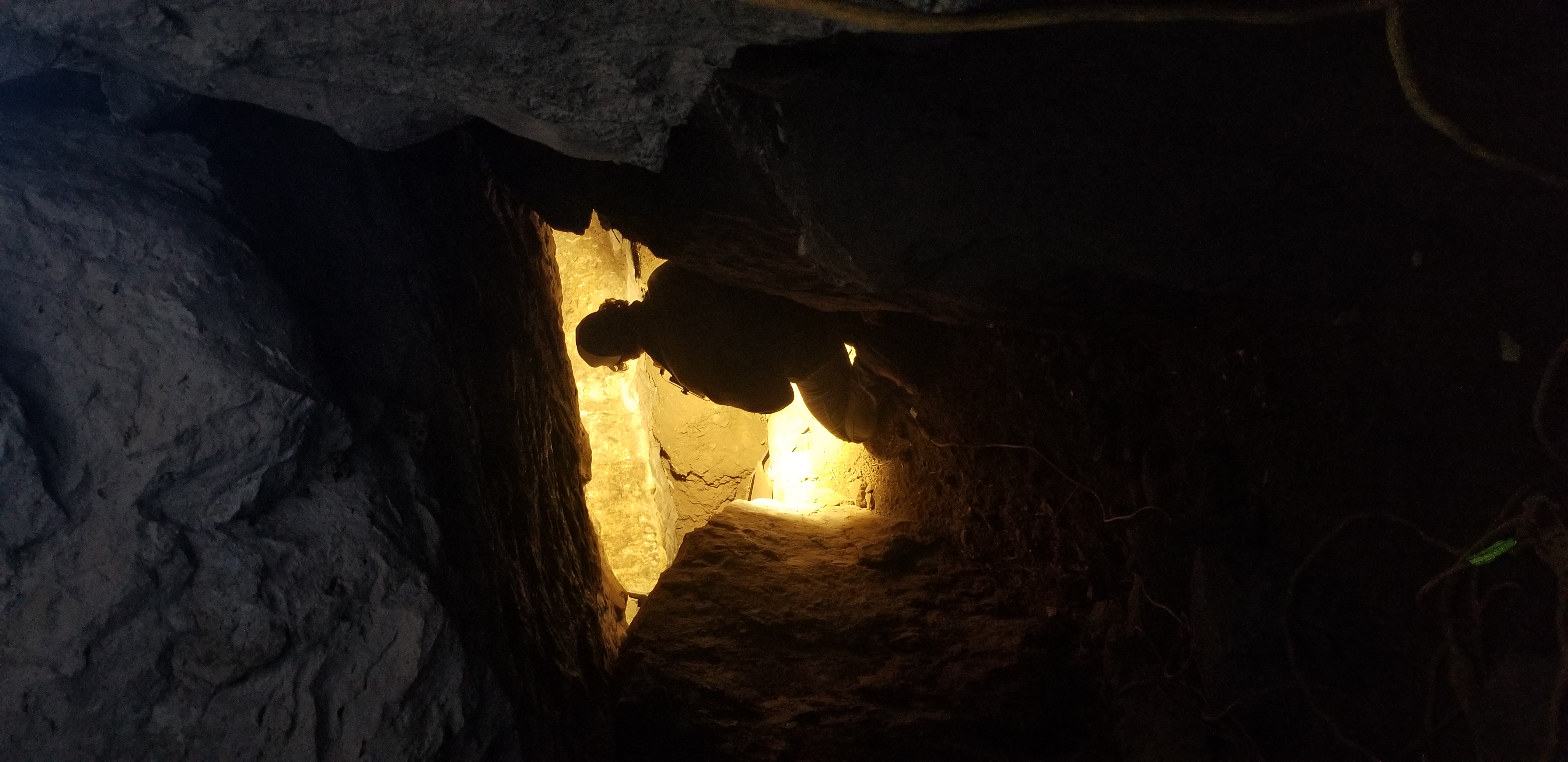#KUFieldWorks: Looking for archaeological evidence of the first people in North America

Editor’s note: Fieldwork provides invaluable insights about real-world environments and processes, expanding and reinforcing what researchers learn in classrooms, labs and collections. KU faculty, staff and students across a spectrum of disciplines take their inquiry directly to rivers, prairies, dig sites, glaciers, islands, burial grounds and more. Through the #KUFieldWorks series, we'll join them on their adventures.
Q&A with University Distinguished Professor Rolfe Mandel
During the summer of 2022, in their search for evidence of the first people to inhabit North America, University of Kansas anthropology students and faculty conducted fieldwork in two very different environmental settings: the Chihuahuan Desert in the Big Bend region of southwest Texas and the boreal forest in the Yukon territory of northwest Canada.
The fieldwork was supported by the Odyssey Archaeological Research Fund, the largest KU Endowment fund devoted entirely to research. Rolfe Mandel, senior scientist with the Kansas Geological Survey and a University Distinguished Professor of anthropology, has served as director of the Odyssey Program since its inception in 2003.
The mission of Odyssey is to search for evidence of the first people to enter North America, often applying geologic methods and theories, and to gain a better understanding of how environmental conditions may have affected those people. Although there is a strong focus on the Great Plains, no region is off limits. In addition to funding thesis and dissertation research related to the program’s mission, Odyssey supports undergraduate and graduate students involved in the program’s summer field investigations.
In 2022, the fieldwork involved KU senior Natalie Nickels and doctoral students Beth Potter and Caroline Kisielinski, as well as anthropology assistant teaching professor Lauren Norman and postdoctoral researcher Lauriane Bourgeon. The KU Odyssey team also collaborated with faculty, researchers and students from Sul Ross State University in Texas and Yukon, Canada government archaeologists.
The team specifically studied the San Esteban Rockshelter and Genevieve Lykes Duncan site in southwest Texas, and Bluefish Caves in the Yukon. At San Esteban, they uncovered a record of human occupation spanning much of the past 15,000 years, and the GLD site yielded the material remains of a Clovis occupation dating to about 12,700 years ago preserved in a buried context, making it the first discovery of its kind in southwest Texas. The team is in the early stages of research at Bluefish Caves, but excavations in 2022 yielded the remains of extinct Ice Age animals that may represent archaeological deposits. They will return to the three sites in the summer of 2023 to continue their fieldwork.
What methods, approaches, experiments, etc. are you using?
Our approach is to select sites that have high potential for containing archaeological materials that are more than about 12,000 years old. Determining the potential takes into consideration various factors, such as the landscape setting, proximity to a spring or other reliable water source, the presence of sedimentary deposits that are the right age, or evidence of repetitious occupation at a site. If there already is evidence that a site was frequently occupied over the past 12,000 years, there’s a good chance for an earlier archaeological record because something attracted people to that locality, so we dig deeper. Once a site is selected for study, systematic excavations are conducted, followed by laboratory analysis to identify artifacts, determine the age of the archaeological deposits, and reconstruct the paleoenvironment for the period of occupation.
During excavations, care and cultural respect are given to artifacts or human remains that might be uncovered at sites. Although guidelines set down by U.S. federal law and directives very rarely directly apply to the discoveries unearthed during Odyssey-related fieldwork, our researchers each embrace the respect for ancestors and cultural heritage embodied in the spirit of the Native American Graves Protection & Repatriation Act, regardless of where we are working or what we might expect or hope to find.

Why does your study matter to your field or for society?
I am often asked about the value of the Odyssey research program. My response is quick and to the point. In addition to training the next generation of archaeologists and geoarchaeologists, the Odyssey program is playing an important role in helping us gain a better understanding of the peopling of the Americas.
What do you enjoy most about being in the field?
When I was a kid growing up in San Antonio, Texas, on weekends I would ask my parents to take me to the Hill Country so I could search for fossils in roadcuts where Cretaceous limestone often was exposed. I had great curiosity about the history of Earth in general, and not only did I enjoy getting outside but I also had passion for exploration and discovery. Sixty years later, I still have that curiosity and passion and have come full circle. I have spent much of my career outside studying sediments exposed in stream banks. Fieldwork allows me to visualize landscape evolution and determine how geologic processes over the past 25,000 years have buried or removed portions of the archaeological record. For me, getting outside — away from my office and computer — and seeing the effects of those processes is rewarding. But it’s digging into the earth and discovering some of the earliest evidence of people in the Americas that is the most exciting aspect of my research.
What are some memorable (funny, scary, surprising, etc.) moments from the field?
Last summer at the San Esteban Rockshelter, a hearth was discovered near the bottom of a deep excavation unit in the back of the shelter. Based on the age of the sediments surrounding the hearth, we knew it was more than 12,000 years old. That discovery was a eureka moment!

When is fieldwork frustrating, challenging or overwhelming?
Experiences during the 2022 field season in the Yukon territory of Canada and Chihuahuan Desert of southwest Texas underscore the challenges of fieldwork in two very different environments. With our research at Bluefish Caves in the Yukon, just getting to the site is a challenge. There are no roads in the region, so it’s necessary to bring the team and all equipment, food and water to the site by helicopter, and a base camp must be set up that is secure (brown bears are common). Also, it can be warm and sunny one moment, then despite being mid-July, it can suddenly turn bitterly cold with rain and/or sleet. And then there are the dense swarms of mosquitos and biting black flies that can make fieldwork very uncomfortable.
The GLD site in the Chihuahuan Desert is accessible by vehicle, but it poses other challenges. The temperature often exceeds 105 degrees, and rattlesnakes and scorpions are common. Work often must end by 3 p.m. because of excessive heat. At the San Esteban site, the large rockshelter provides protection from the heat, but massive blocks of roof can fall and create obstacles, forcing us to tunnel our way into the back of the rockshelter. That can be scary, especially for those with claustrophobia.

First photo: University of Kansas researchers conduct fieldwork in prairies, rivers, streams and mountains. The #KUFieldWorks series follows researchers on their fieldwork adventures.
Second photo: A KU Odyssey research team excavates at the Bluefish Caves archaeological site in the Yukon territory of Canada.
Third photo: Erika Blecha (right), archaeologist with the Center for Big Bend Studies at Sul Ross State University-Alpine, and Rolfe Mandel collect soil samples from an archaeological excavation at the Genevieve Lykes Duncan site in southwest Texas.
Fourth photo: Massive blocks of fallen roof create obstacles and force team members to tunnel their way into the back of the rockshelter.